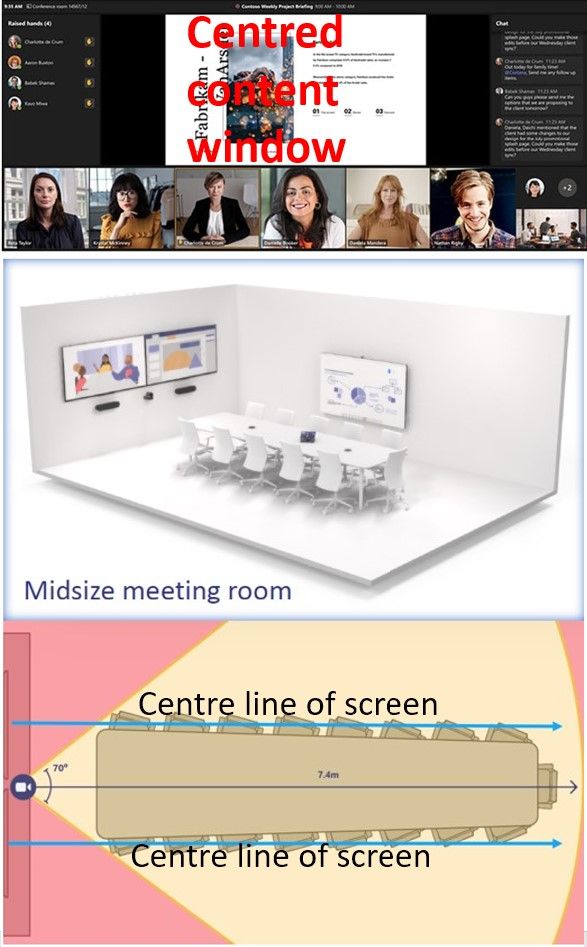Why are twin screens such a problem in Microsoft Teams Rooms and in all hybrid meeting rooms?
Here’s why.

1 There is no option for the centred content window
2 Viewers at the front of the table can block the view of those at the back
3 The individual screens are too small.
The standard that applies here is AVIXA’s DISCAS standard, which sets image size, viewing positions and resolution. When my task group wrote this standard, we said everyone should have a full view of the display, should be able to read and engage with the onscreen content. No cheap seats.
Display size is specified by height. It doesn’t matter what the aspect ratio is - even twin screens (which count as 32:9).
Hybrid meeting screens have multiple content windows. We need to see the remote participants at the same time as the main content being displayed - all the facts and figures. Plus chat windows etc.
In the typical example where the content window is 60% of the height of the overall image, then standard DISCAS use where the farthest viewer should be no more than six (6) times the image height no longer applies. But in this case the farthest viewer should be no further than 3.6 times the screen height.
What does this mean? Well for one thing, twin screen or single screen, a 98” flat panel is no longer large enough for even relatively small spaces. In the above example, the main content window on a 98” flat panel is actually less than 60”!
This is why the ‘digital canvas’ is now the leading concept in display design - speaking to the need to have substantially larger image areas, allowing maximum flexibility and futureproofing as Teams, Zoom etc screen layouts develop further over the coming years.
And this is also why Microsoft has moved to ALR (ambient light rejecting) laser projection as it delivers the best and most natural user experiences. This is the most modern and state-of-the-art display technology. Projection done properly costs more than using the good old white screens. But the cost per m2 is still a fraction of flat panel - and especially dvLED. Plus the running costs are a fraction of the emissive technologies - the ones that shine light directly into your eyes.
In Greg Jeffreys Consulting we help users, AV consultants and integrators create exceptional user experiences and to get the very best results from their room technologies.

Posted: 9th February 2024